The Startup Story of Userflow: From 0 to $4M ARR with 3 People
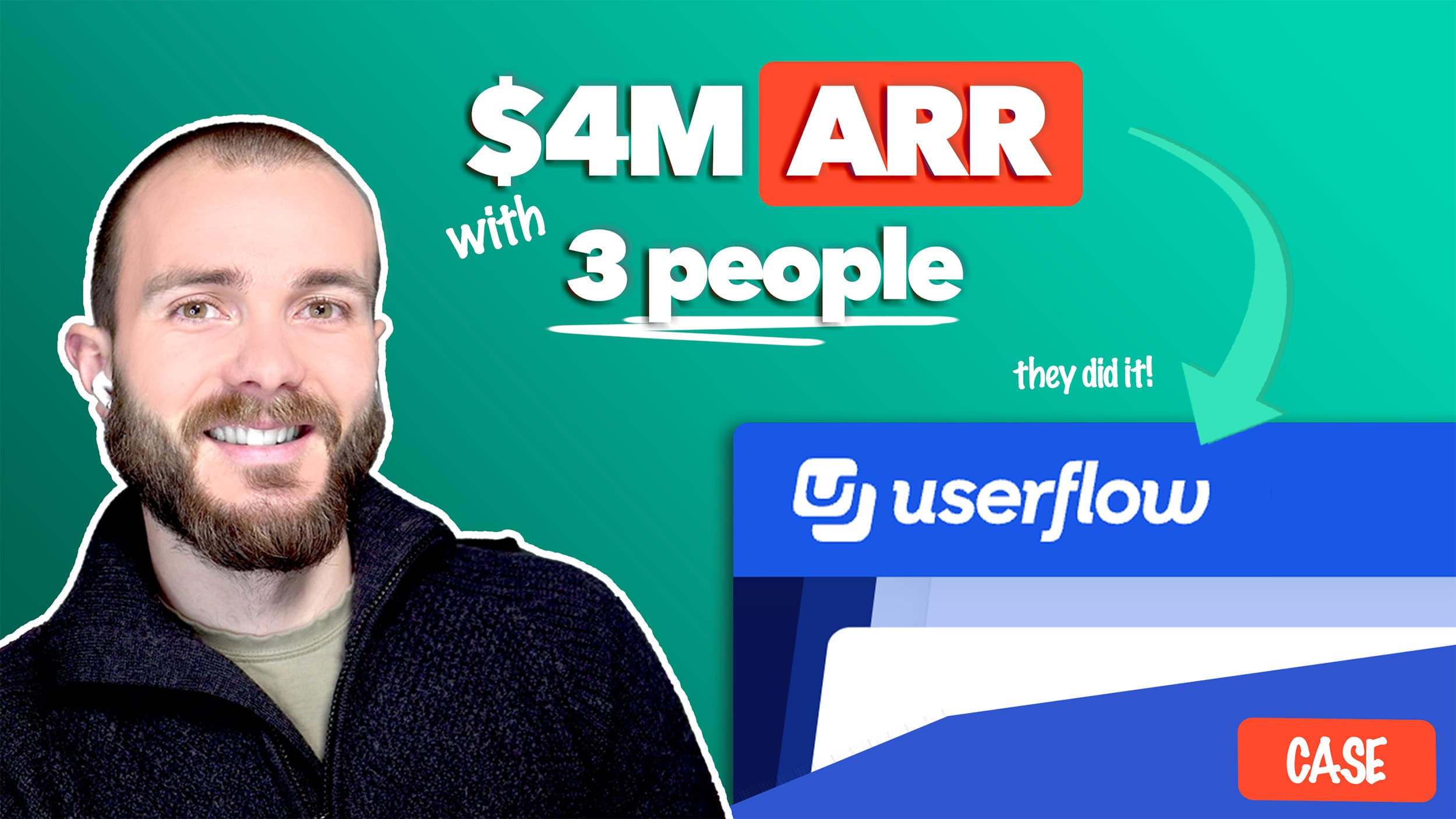
Contents
Number of employees, or dollars of VC funding - are those really the right KPI:s to measure startup success?
Many founders are chasing the unicorn dream, ie. the media's view of a ideal startup. Userflow is a proof that you can do things differently.
“Instead of chasing VC capital, chase customers, chase paying customers - that’s where you will get the real feedback,”
- Esben Friis-Jensen, CEO of Userflow
Userflow is a B2B SaaS that bootstrapped their way to $4M ARR - ultimately exiting at a valuation of around $60M. And did so, being a team of only 3 people.
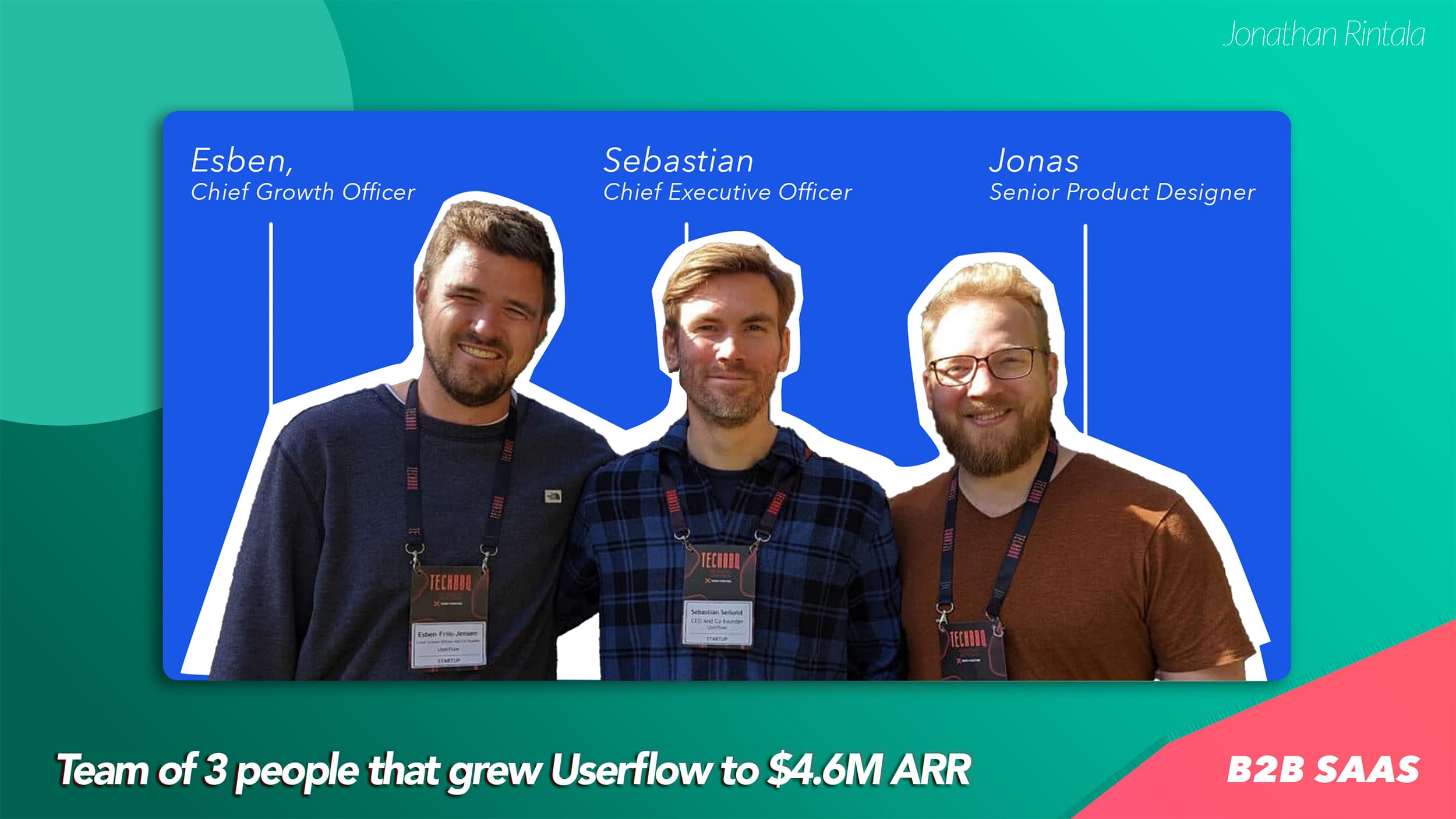
The Userflow team of 3 that scaled to $4.6M ARR
Here is the startup story of Userflow - featuring bootstrapping, automation and product-led growth (PLG).
What is Userflow?
Userflow is a no-code customer onboarding platform. It helps SaaS companies create in-app user experiences, such as interactive onboarding flows, product tours, and guides.

This improves user onboarding and product adoption. Without requiring expensive engineers.
That's the first obvious key to Userflow's success - solve a real pain point for your customers and do it well.
1. Using bootstrapping to their advantage
While many startups chase funding, Userflow opted to bootstrap. Why? The founders wanted to retain control and scale sustainably. This lean approach forced them to focus on what truly mattered: delivering an exceptional product that practically sold itself.
Work-life balance - create a company you want to run
IMO the coolest part about Userflow, is that they built a company they thought was fun to run. Not in a way media thought a startup should be built. And not how VC thought they should do it.
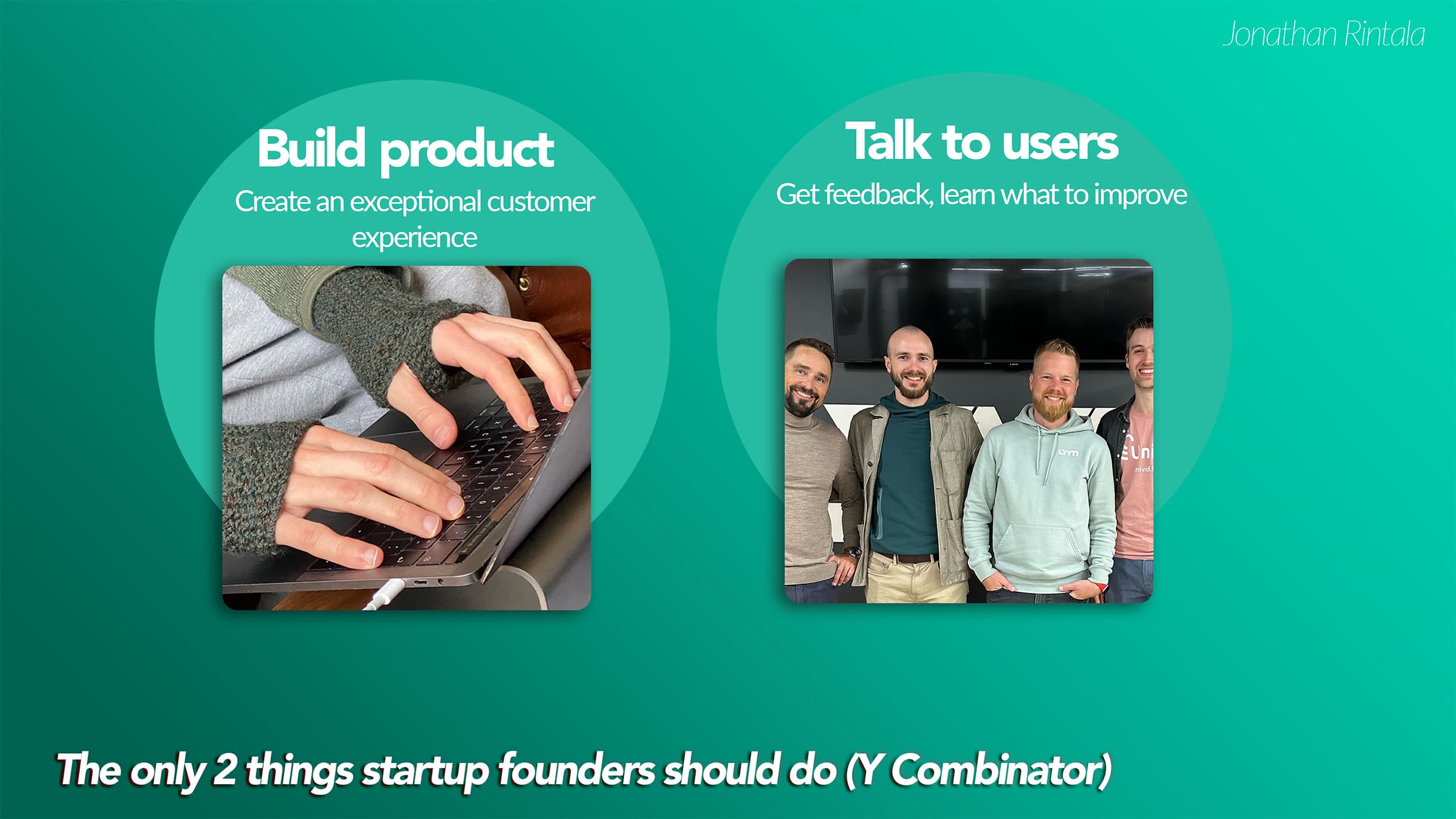
The only two things a startup founder should do
They built a lean company when everyone said they should do it differently. When everyone was encouraging them to hire more staff to not miss out of growth.
The result? Exiting at a valuation of $60M, with only 3 people on the team, and without any outside investors on the captable. As a founder that type of exit is hard to beat.
They could do this because Esben had previous experience of running a VC backed company - meaning he knew the dark side of raising funds and expanding the team. In his previous startup, Esben found that by hiring more people, he as a founder did not work less.
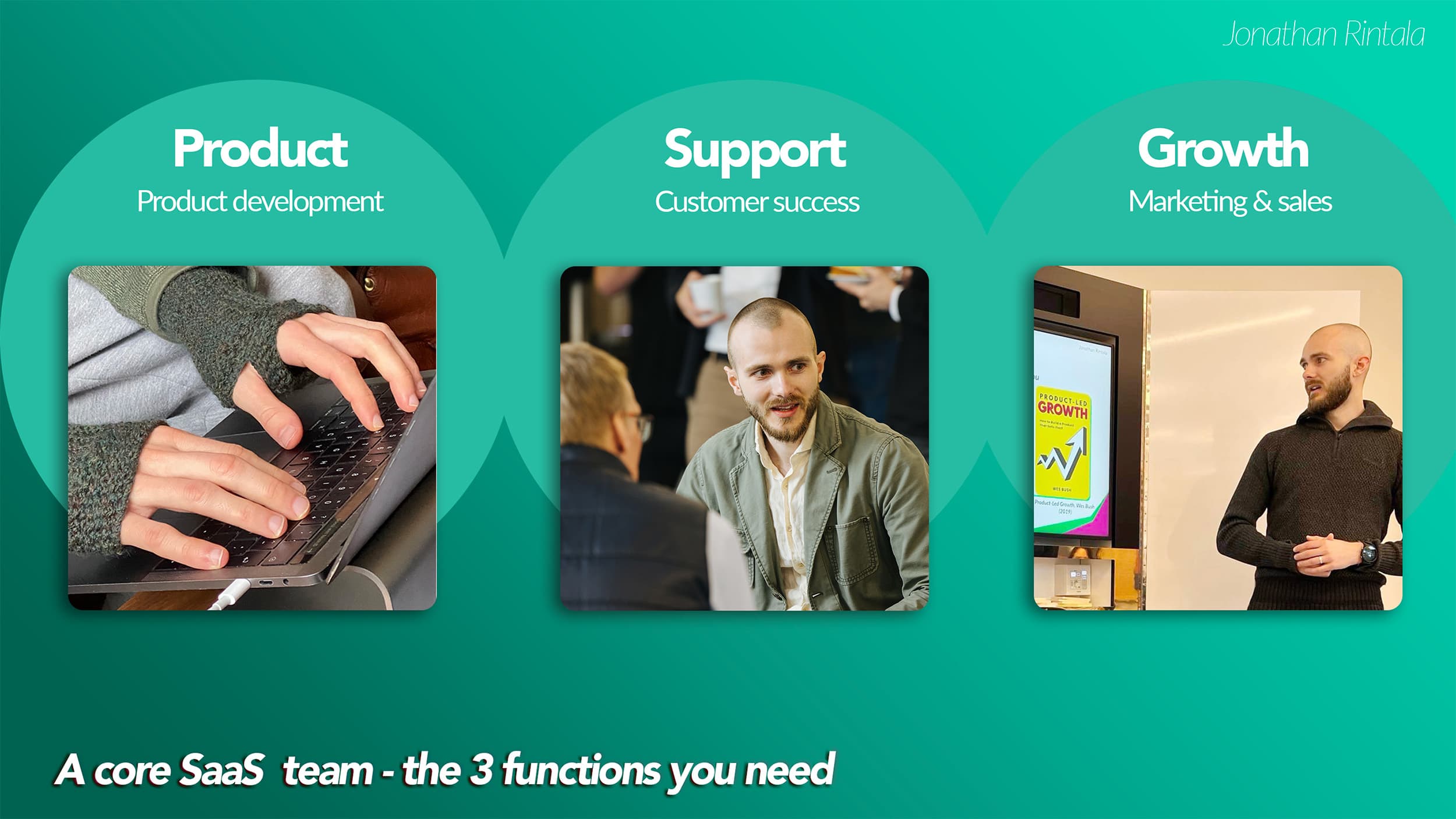
Instead he spent his time managing people, having recurring meetings on the schedule, and doing everything except creating customer value.
With a team of just 3 people, they instead managed everything themselves.
product development
customer success
marketing
And they did so in a hyper efficient and lean way. Not requiring the founders to work 80-hour weeks.
By having no employees, no recurring meetings and no management tasks. Userflow achieved hyper efficiency and freedom. Instead they could focus all their efforts on delivering customer value. They also worked remotely, allowing work-life balance to stay productive.
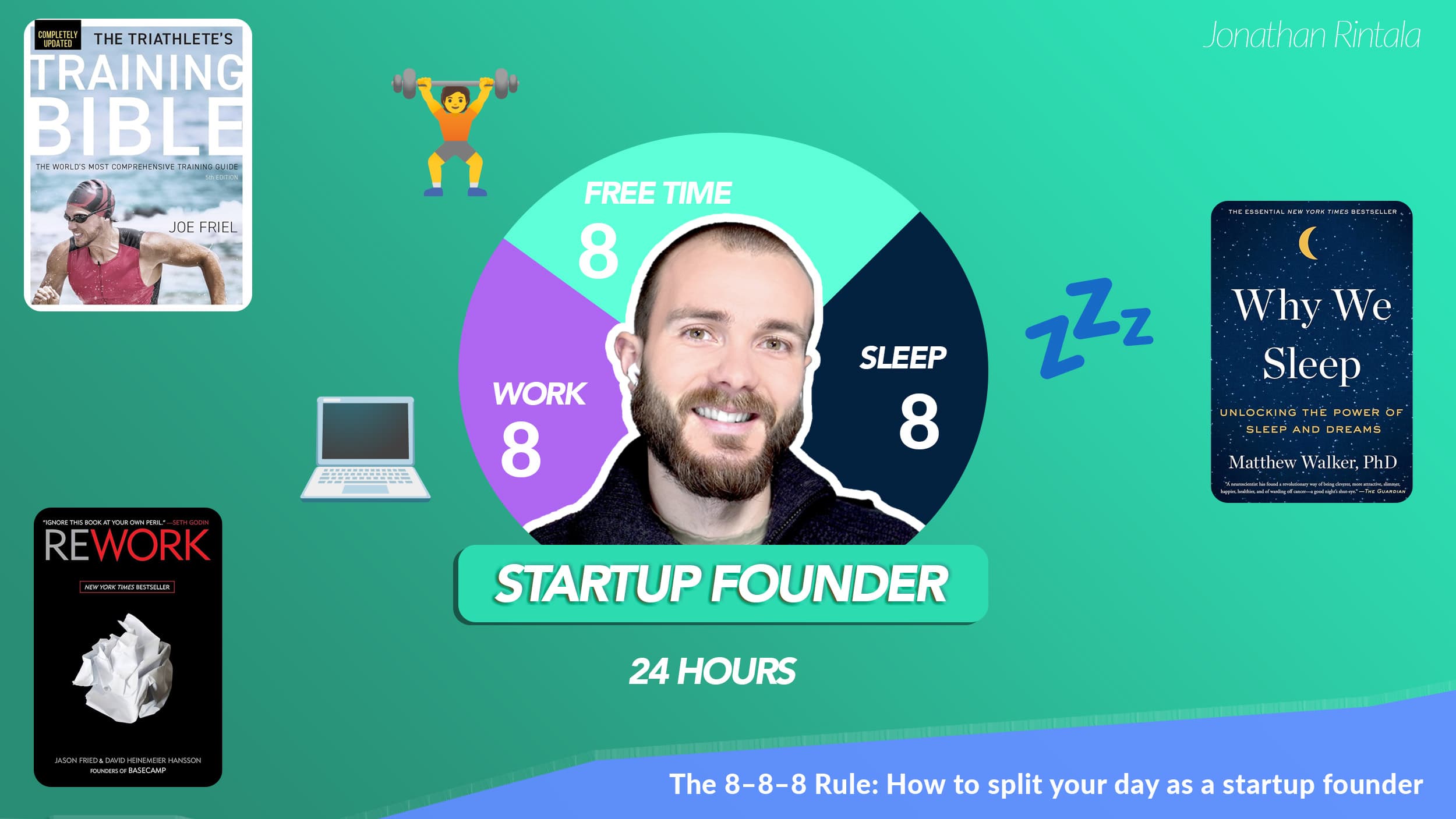
Startups are a marathon, not a sprint. Esben knew this and prioritized a sustainable working culture vs short-term growth at all costs.
Solve customer support with automation and through the product
Automation played a crucial role in Userflow's journey - allowing them to serve a growing customer base without expanding their workforce.
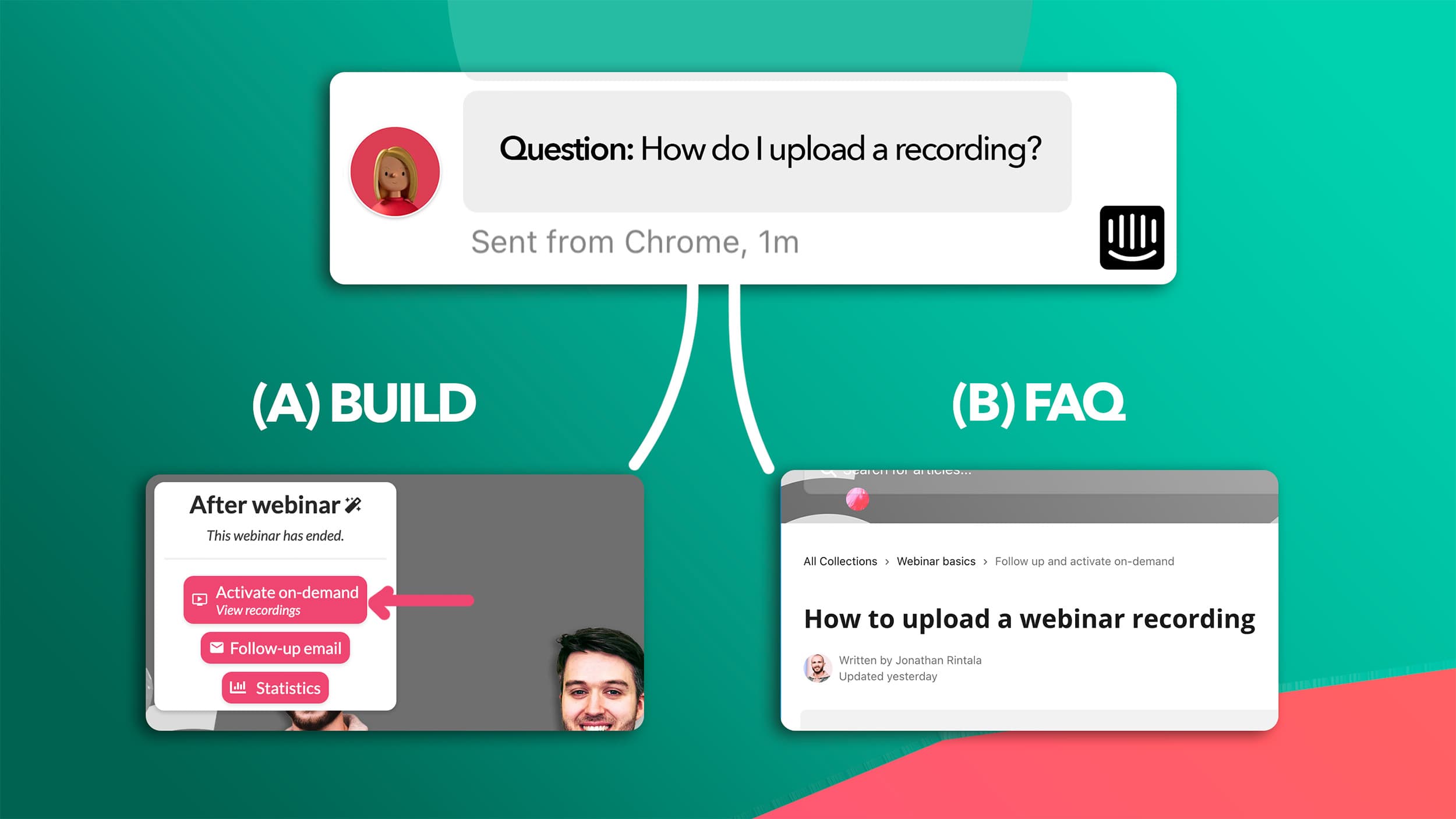
Instead of hiring to cover up inefficient workflows, or supporting non-scalable customer expectations and behaviours, Userflow did a few things:
Set the customer expectations straight - Slack community (peer-to-peer) and self-serve support flows like guides, and FAQs
Instantly added customer feedback into the product - remove it at the root, questions should not come again
Remove hands-on CS from entry plans - only the larger enterprise plans can expect more hands-on support
Move to async support - instead of requiring instant live support, move as much as possible to async
Remove hands-on CS from entry plans
You should do things that do not scale. But too many companies give way too much hands-on support to all their plans. Instead, try making support less accessible for the smaller plans. By introducing friction, you will allow for higher ACV and more async support which scales much better.
Instead, introducing a Slack community, a help center with FAQ, and building in feedback into the product immediately - you will provide support in a scalable way.
Not sure? Try it and see what happens.
2. Going all in on Product-Led Growth
PLG was at the heart of Userflow’s strategy. Instead of relying on a sales team, the product became the primary driver of growth.
The self-service model meant customers could quickly sign up, experience the value, and scale their usage—without requiring a single sales call.
This approach not only kept costs low but also ensured high retention rates as customers were genuinely satisfied with the product.
Map out steps and customer interactions in product
Undertsand how customers use your product. Map out the customer journeys. Ask yourself:
What can be built or done differently?
What can be removed?
"Rather remove old features, than build new ones."
- Esben, Userflow
Too many SaaS just keep adding features, making their products big and complex, instead of keeping the simplicity and core that people love.
Try to maximize the core and remove any unnecessary features.
Dogfooding - using their own SaaS product
Esben points out that Userflow have been using their own product to onboard their customers, ie. they have been "eating their own dog food" (often referred to as dogfooding in SaaS).
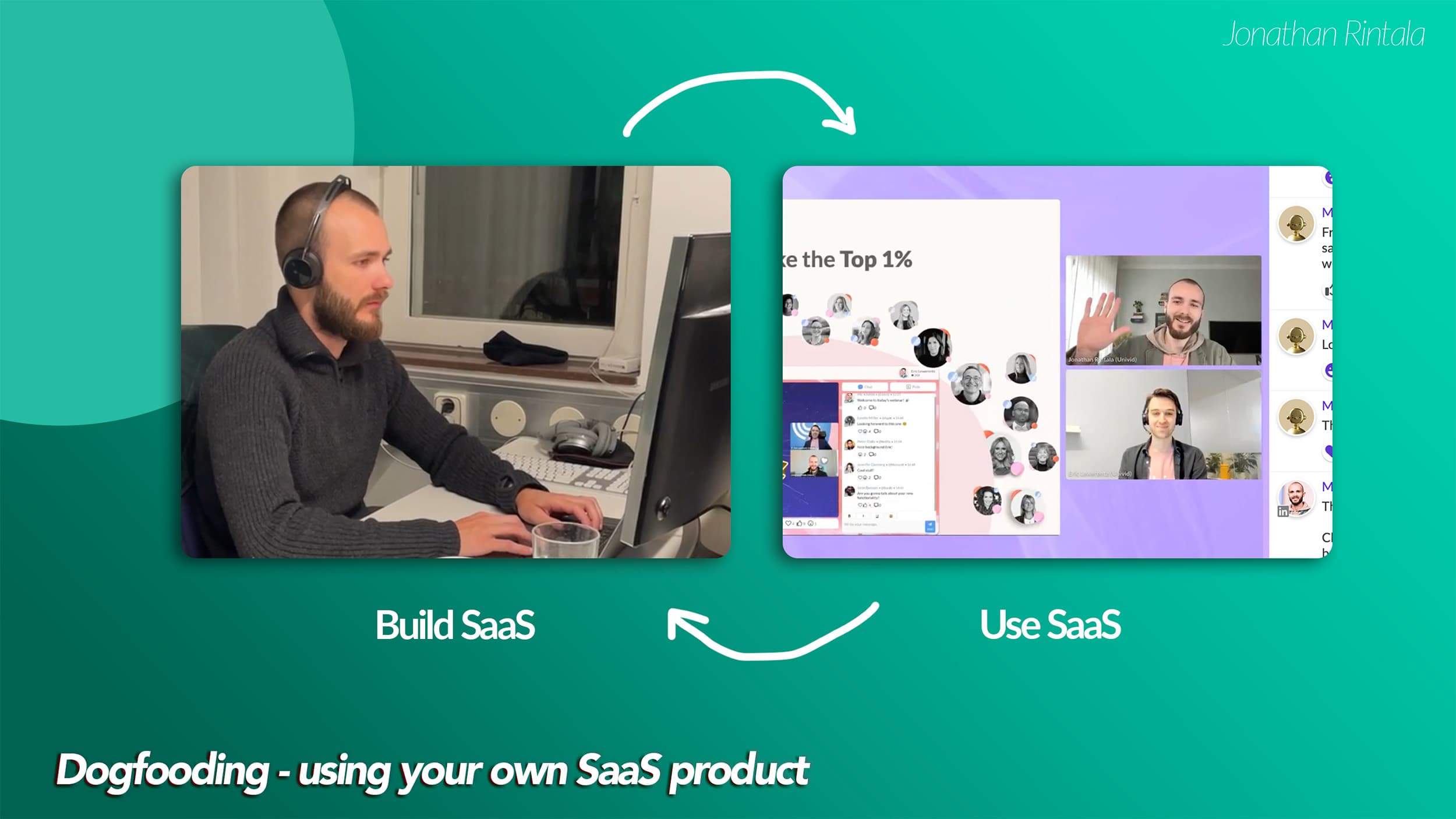
This ensured they worked out bugs, experienced the product first-hand, and made a product that was good enough to use themselves.
Have clear stakeholder to move towards PLG
The PLG motion for Userflow was fairly easy - as they were born into it from the start and kept the team so small. So they knew it was something they prioritized. They had to, in order to survive.
A recommendation if you want to move towards PLG and have a larger team - appoint a clear stakeholder that will lead the process. This person should have FULL buy in from management and the top. Allow them to make mistakes and give them freedom.
Also, if you are in to product-led growth and want to learn more about it - a good read is Product-Led Growth: How to Build a Product That Sells Itself by Wes Bush.
3. Making a big exit happen
Reaching $4M ARR and Beyond
In just a few years, Userflow achieved what many startups only dream of: $4M ARR. They hit this milestone while staying true to their lean operations. With around 600 customers. Meaning their ACV was around $6.7K at the time of exit.
Reaching this size, they proved that massive growth does NOT require a massive (or even large) team.
Exiting at a 13X ARR valuation
The lean machine that was created with Userflow and their consistent growth - led up to the strategic acquisition of Userflow in 2024 by user-engagement software platform Beamer. The exit valuation was reported to be $60 million (Source: Techcrunch).
That's a staggering X13 ARR - a great SaaS exit multiple.
Esben explains that was largely because their team was so lean. Their revenue per employee was high, and they were in no rush to sell - as they kept growing steadily with good work-life-balance.
"Startups are bought, not sold"
- Ezra Roizen, Magic Box Paradigm
Ie. Userflow was not looking to be sold, but could rather wait for the perfect strategic fit to approach them. Like the book Magic Box Paradigm: A Framework for Startup Acquisitions preaches when it comes to successful startup exits - you want your startup to be bought, not sold.
Tools and automation
The Userflow team obsessed about automating tasks and tracking data. This also meant choosing the right stack of tools.
Here are some of the SaaS tools Userflow used in their journey:
Use case | SaaS tool |
|---|---|
Support | Intercom |
CRM | HubSpot CRM |
Billing | Stripe |
SaaS Metrics | ChartMogul |
Communication | Slack, Notion |
Analytics | Mixpanel |
AI | ChatGPT |
They also used these tools fully, eliminating the need for additional employees.
For example, by publishing a ton of information in guides online. Allowing their users to self-serve themselves to answer their questions - keeping down the need for high-touch CS.
Conclusion
The Userflow startup journey offers valuable lessons for founders and entrepreneurs. Here are the the 3 top lessons.
Stay lean: Focus on what drives value. Automate the rest.
Leverage PLG: Let your product do the heavy lifting for growth.
Bootstrap where you can: Growth doesn’t mean you have loosing ownership or control.
Want to learn more about growing SaaS companies?

